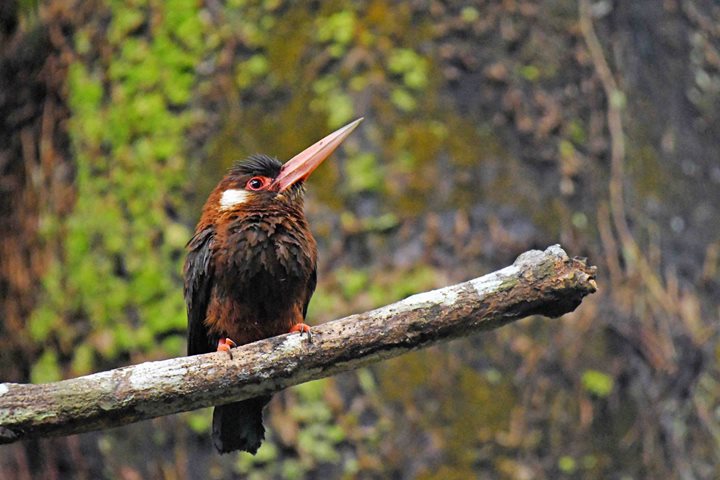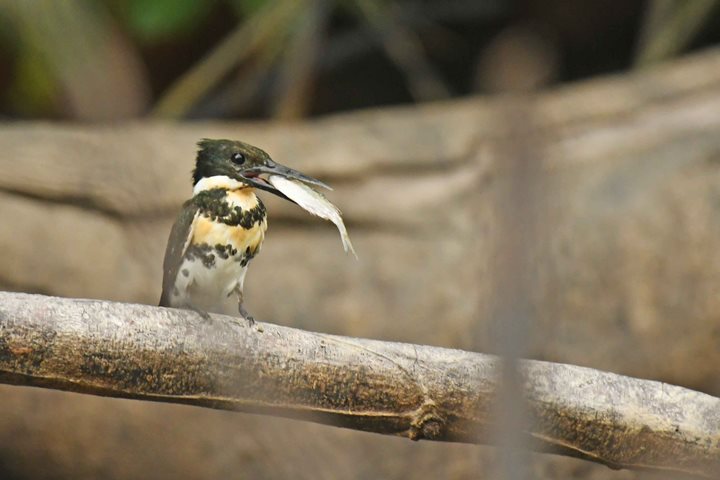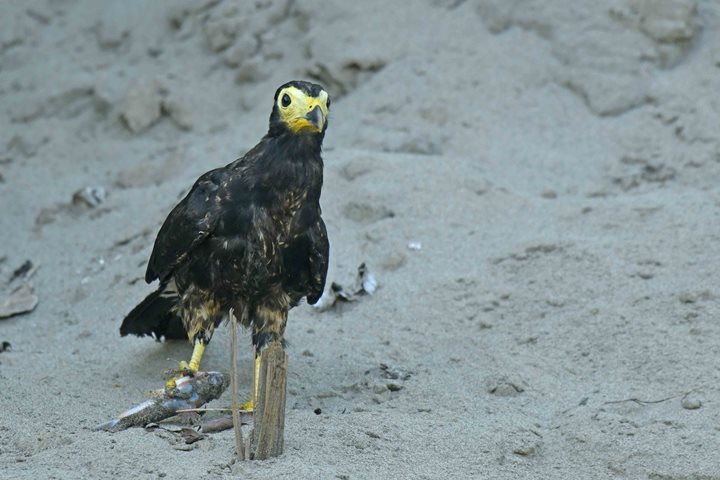Our last full day exploring the Peruvian Amazon was full of surprises. We started shortly after sunrise and boarded our skiffs to navigate the Supay River, one of the Ucayali River tributaries outside of the Pacaya-Samiria National Reserve. The area is well known for an abundance of the native camu-camu bush, both wild and cultivated, which produces a delicious berry that makes a juice that we have been enjoying on board. We soon encountered numerous interesting animals to watch, including some very cooperative great black and black-collared hawks that posed for our cameras for a long time. A couple of three-toed sloths, both males, were spotted high on cecropia trees feeding on tender young leaves and our eagle-eyed local guides even found a few individuals of the world's smallest primate, the pygmy marmoset. We watched them at our leisure as they moved around their favorite branches, always wary of potential predators.
Shortly afterward we had the chance to see a troop of the always-fun-to-watch squirrel monkeys and enjoyed watching them doing some incredible leaps between trees. We also made an interesting discovery of a new monkey species for the trip, the red-bellied titi.
As we were making our way back to the ship for breakfast, we met a local family traveling on a small boat and we stopped to chat with them. They showed us their family pet, a young woolly monkey named Pancho. Keeping wild animals as pets has been a common practice throughout the region for centuries and even though nowadays it is illegal, the lack of enforcement in remote areas makes it easy for this custom to remain alive.
In the afternoon we boarded the skiffs again for our last outing of the trip, this time to explore the vicinity of a small town called San José Paranapura. There we had multiple chances to watch the abundant birdlife, but also had a marvelous opportunity to see one of the iconic plants of the Amazon basin, the Victoria regia, also known as the giant water lily. With huge 3-4 ft. diameter leaves protected with toxic spines, this aquatic plant provides important micro-habitat for numerous insects, fish and bird species, including the wattled jacana. Their big flowers are magnificent to observe, also putting an appropriate ending note to our time exploring the marvelous Peruvian Amazon.







